
The Enchanting Charms of Chiang Rai
Discover the serene beauty and rich cultural heritage of Chiang Rai, Thailand's northern gem, known for its iconic temples, vibrant arts scene, and stunning natural landscapes.
Nestled in the northernmost region of Thailand, Chiang Rai is a city that offers an exquisite blend of culture, history, and natural beauty. Known for its serene landscapes and vibrant arts scene, this city provides a tranquil escape from the bustling crowds of more popular Thai destinations. The iconic White Temple (Wat Rong Khun) is a must-see, with its stunning, otherworldly design created by local artist Chalermchai Kositpipat. A visit to Chiang Rai would be incomplete without exploring the picturesque Blue Temple (Wat Rong Suea Ten), which features dazzling blue hues and intricate carvings. The city's rich history comes alive at the Black House (Baan Dam Museum), an unconventional art museum showcasing a fascinating collection of sculptures and artifacts. Chiang Rai is also a gateway to the Golden Triangle, where the borders of Thailand, Myanmar, and Laos converge. This area offers panoramic views and a glimpse into the region's storied past. For nature lovers, the Mae Fah Luang Garden and Doi Tung Royal Villa provide a refreshing retreat with their lush flora and scenic vistas. Don't forget to explore the bustling night bazaar, where you can sample local delicacies and shop for unique souvenirs.
Local tips in Chiang Rai
- Visit the White Temple early in the morning to avoid crowds and enjoy the tranquil atmosphere.
- Wear comfortable shoes while exploring the city's temples and museums, as some areas require walking on uneven surfaces.
- Don't miss the night bazaar for delicious street food and unique handicrafts.
- Consider hiring a local guide to get in-depth insights into the history and culture of Chiang Rai.
- Carry a light jacket or sweater, as the evenings can be cool, especially during the winter months.
- Check the weather forecast before visiting the Mae Fah Luang Garden, as it is best enjoyed on a clear day.
The Enchanting Charms of Chiang Rai
Nestled in the northernmost region of Thailand, Chiang Rai is a city that offers an exquisite blend of culture, history, and natural beauty. Known for its serene landscapes and vibrant arts scene, this city provides a tranquil escape from the bustling crowds of more popular Thai destinations. The iconic White Temple (Wat Rong Khun) is a must-see, with its stunning, otherworldly design created by local artist Chalermchai Kositpipat. A visit to Chiang Rai would be incomplete without exploring the picturesque Blue Temple (Wat Rong Suea Ten), which features dazzling blue hues and intricate carvings. The city's rich history comes alive at the Black House (Baan Dam Museum), an unconventional art museum showcasing a fascinating collection of sculptures and artifacts. Chiang Rai is also a gateway to the Golden Triangle, where the borders of Thailand, Myanmar, and Laos converge. This area offers panoramic views and a glimpse into the region's storied past. For nature lovers, the Mae Fah Luang Garden and Doi Tung Royal Villa provide a refreshing retreat with their lush flora and scenic vistas. Don't forget to explore the bustling night bazaar, where you can sample local delicacies and shop for unique souvenirs.
When is the best time to go to Chiang Rai?
Iconic landmarks you can’t miss
Wat Rong Khun - White Temple
Discover the ethereal beauty of Wat Rong Khun, the White Temple in Chiang Rai, Thailand, where contemporary art meets Buddhist spirituality in a stunning setting.

Rong Suea Ten Temple
Discover the stunning Rong Suea Ten Temple, a masterpiece of modern Buddhist architecture in Chiang Rai, Thailand, renowned for its vibrant blue hues and spiritual ambiance.

Wat Huay Pla Kang: Goddess of Mercy Chiang Rai
Discover the serene beauty of Wat Huay Pla Kang, a stunning Buddhist temple in Chiang Rai that offers spiritual insights and breathtaking views.

Chiang Rai Night Bazaar
Explore the Chiang Rai Night Bazaar – a vibrant night market filled with local crafts, delicious food, and authentic Thai culture.

Singha Park Chiang Rai
Experience the breathtaking landscapes and vibrant attractions of Singha Park Chiang Rai, a perfect blend of nature and adventure.

Baan Dam Museum
Explore the unique blend of Thai art and culture at Baan Dam Museum, a must-visit attraction in Chiang Rai.

Chiang Rai Clock Tower
Discover the magic of Chiang Rai Clock Tower, a stunning landmark blending art and culture in the heart of Thailand's picturesque city.

Wat Phra Kaew Chiang Rai
Discover the beauty and spirituality of Wat Phra Kaew in Chiang Rai, a captivating Buddhist temple filled with rich history and stunning artistry.

Walking Street Chiang Rai
Experience the bustling energy and local culture at Walking Street Chiang Rai, where the flavors of Thailand meet vibrant shopping and entertainment.

Mae Fah Luang - Chiang Rai International Airport (CEI)
Discover the beauty of Northern Thailand from Mae Fah Luang - Chiang Rai International Airport, the gateway to culture, nature, and adventure.

King Mangrai Monument
Explore the King Mangrai Monument in Chiang Rai, a serene landmark celebrating the rich history and culture of Northern Thailand amidst lush gardens.

Wat Phra Sing
Explore the beauty and spirituality of Wat Phra Sing, a stunning Buddhist temple in Chiang Rai, Thailand, renowned for its architecture and cultural significance.

Chiang Rai City Pillar Shrine (San Lak Mueang)
Explore the spiritual heart of Chiang Rai at the City Pillar Shrine, a beautiful cultural landmark rich in tradition and history.

Chiang Rai River Beach
Experience tranquility at Chiang Rai River Beach, a beautiful park where nature meets culture in the heart of Thailand.

Khun Korn Forest Park Waterfall
Experience the breathtaking beauty of Khun Korn Forest Park Waterfall, a must-visit hiking paradise in Chiang Rai, Thailand.

Unmissable attractions to see
Wat Rong Suea Ten
Discover the mesmerizing beauty of Wat Rong Suea Ten, Chiang Rai's stunning Blue Temple, where art and spirituality converge in a vibrant display.

Wat Huay Pla Kang
Discover the majestic Wat Huay Pla Kang in Chiang Rai, Thailand: a serene Buddhist temple with stunning architecture and breathtaking views.

Choui Fong Tea
Discover the beauty of Choui Fong Tea in Chiang Rai, a serene destination for tea lovers and nature enthusiasts alike, surrounded by breathtaking landscapes.

Chiang Rai Night Bazaar
Discover the vibrant culture and delicious flavors at Chiang Rai Night Bazaar, a must-visit destination for every traveler in northern Thailand.

Baan Dam Museum
Explore the mystical Baan Dam Museum in Chiang Rai, a unique blend of traditional and contemporary Thai art that captivates all visitors.

Singha Park Chiang Rai
Explore the breathtaking beauty and adventurous activities at Singha Park Chiang Rai, a top tourist destination in Thailand for nature lovers and thrill-seekers.

Chiang Rai Clock Tower
Discover the stunning Chiang Rai Clock Tower, a vibrant symbol of Thai culture and artistry, illuminated by breathtaking night lights.

Wat Phra Kaew Chiang Rai
Discover the serene beauty and rich culture of Wat Phra Kaew, a stunning Buddhist temple and a must-visit attraction in Chiang Rai, Thailand.

Singha Park
Explore the beauty of nature at Singha Park, Chiang Rai, where stunning landscapes and outdoor adventures await.

75 Anniversary Flag and Lamp Park
Discover the beauty of 75 Anniversary Flag and Lamp Park in Chiang Rai, a serene space blending nature, culture, and recreation for every traveler.

Wat Saeng Kaeo Phothiyan
Explore the serene beauty and rich cultural heritage of Wat Saeng Kaeo Phothiyan, a hidden gem in Chiang Rai's Mae Suai District.

Doi Tung Royal Villa, Mae Fah Luang
Experience the tranquility and royal heritage at Doi Tung Royal Villa in Chiang Rai, a must-visit destination for every traveler.

Pong Phrabat Hot Springs
Discover the therapeutic allure of Pong Phrabat Hot Springs in Chiang Rai, where relaxation meets stunning natural beauty in a tranquil setting.

Tea Plantation 101 Doi Mae Salong
Explore the captivating landscapes and rich tea culture at Tea Plantation 101 Doi Mae Salong in Chiang Rai, Thailand.
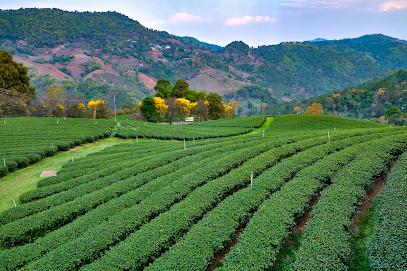
Long Neck Karen Village
Discover the unique culture of the Long Neck Karen people in Chiang Rai, Thailand, and experience a rich tapestry of traditions and crafts.

Essential places to dine
Chivit Thamma Da Coffee House, Bistro & Bar
Discover the charm of Chivit Thamma Da Coffee House - where exquisite cuisine meets cozy ambiance in Chiang Rai's vibrant culinary scene.

Lu Lam Restaurant Chiang Rai
Experience authentic Thai flavors at Lu Lam Restaurant in Chiang Rai - where every dish tells a story.

CAT 'n' A CUP Cat Cafe
Experience tranquility at CAT 'n' A CUP Cat Cafe in Chiang Rai - where adorable cats meet delicious coffee and desserts!

Melt In Your Mouth
Experience the best of Thai cuisine at Melt In Your Mouth in Chiang Rai – where every bite tells a story.
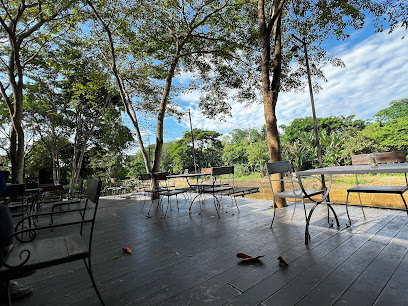
Larb Sanam Keela
Experience authentic Northern Thai flavors at Larb Sanam Keela, Chiang Rai's favorite spot for delicious larb and traditional cuisine.

Barrab restaurant Chiang Rai
Experience authentic Thai cuisine at Barrab Restaurant in Chiang Rai, where unique flavors meet warm hospitality at affordable prices.

Leelawadee Chiang Rai Restaurant
Experience authentic Thai cuisine at Leelawadee Chiang Rai Restaurant – where every dish tells a story of tradition and flavor.

RIBS&CO
Discover the ultimate American grill experience at RIBS&CO in Chiang Rai – where every bite is a celebration of flavor.

Hungry Wolf's Steak & Ale-House
Discover delectable steaks and classic American dishes at Hungry Wolf's Steak & Ale-House in Chiang Rai – where flavor meets hospitality.

Phu Lae Restaurant
Experience authentic Thai cuisine at Phu Lae Restaurant in Chiang Rai – where flavor meets tradition in a cozy setting.

Accha Authentic Indian Cuisine Chiang Rai
Discover authentic Indian cuisine at Accha in Chiang Rai – where rich flavors meet warm hospitality.

Ma Long Der
Experience the essence of Thai cuisine at Ma Long Der in Chiang Rai – where every dish tells a story of flavor and tradition.

Kunda Vegan Burger Cafe Chiang Rai
Discover the vibrant flavors of Kunda Vegan Burger Cafe in Chiang Rai - where plant-based delights meet community spirit!

Dear Friends, Bistro
Experience exquisite French-Italian cuisine at Dear Friends Bistro in Chiang Rai – where culinary passion meets warm hospitality.
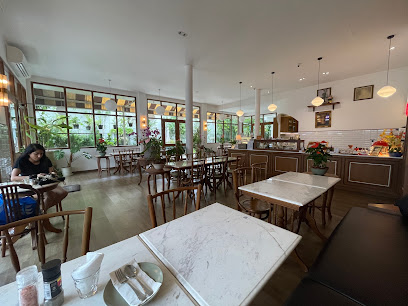
Nakhon Pathom Restaurant
Experience authentic Thai cuisine at Nakhon Pathom Restaurant in Chiang Rai - a culinary delight awaits every visitor.

Markets, malls and hidden boutiques
Chiang Rai Night Bazaar
Discover the captivating Chiang Rai Night Bazaar, a vibrant market filled with local flavors, unique crafts, and lively entertainment in Northern Thailand.

Central Chiang Rai
Discover the vibrant shopping, diverse dining, and rich culture at Central Chiang Rai, a must-visit mall for every traveler.

Chivit Thamma Da Coffee House, Bistro & Bar
Experience the charm of Chiang Rai at Chivit Thamma Da Coffee House, Bistro & Bar, where exquisite flavors meet serene surroundings.

Walking Street Chiang Rai
Discover the bustling energy of Walking Street Chiang Rai, where delicious food and unique souvenirs await every traveler.

Big C Supercenter Chiang Rai 1
Experience the vibrant shopping culture of Chiang Rai at Big C Supercenter—a hypermarket that offers everything from fresh produce to local delicacies.

B2 Chiang Rai Hotel / บีทู เชียงราย
Discover the charm of Chiang Rai at B2 Chiang Rai Hotel, a boutique stay that blends comfort and culture in the heart of Northern Thailand.

Big C Supercenter Chiang Rai 2 Airport
Discover the vibrant shopping experience at Big C Supercenter Chiang Rai, where local flavors meet global goods in a family-friendly atmosphere.

B2 Chiang Rai Night Bazaar Boutique & Budget Hotel
Discover the charm of Chiang Rai at B2 Night Bazaar Boutique Hotel, where comfort meets local culture in a budget-friendly stay.

CAT 'n' A CUP Cat Cafe
Discover the joy of feline companionship while enjoying delicious coffee and desserts at CAT 'n' A CUP Cat Cafe in Chiang Rai.

Kad Luang Chiang Rai Market
Explore the vibrant Kad Luang Chiang Rai Market for an authentic taste of local culture, delicious street food, and unique handicrafts in Northern Thailand.

Robinson Chiangrai
Explore Robinson Chiangrai, a vibrant department store in Chiang Rai offering a mix of local crafts, fashion, and dining experiences for every traveler.

Kyoto Shi Cafe キョウトシ カフェ เชียงราย
Discover the serene ambiance and exquisite coffee at Kyoto Shi Cafe in Chiang Rai, where local culture meets flavor.
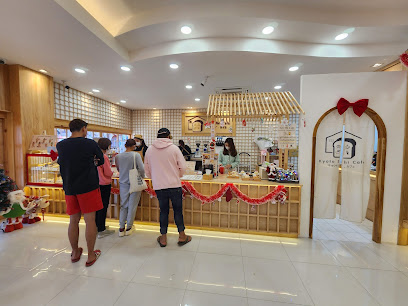
Coffeenergy Chiang Rai
Discover Coffeenergy Chiang Rai, a cozy coffee shop serving delicious breakfasts, brunches, and aromatic coffees in a welcoming atmosphere.

1:2 Chiangrai brew - Warehouse
Experience the rich flavors of specialty coffee in a cozy setting at 1:2 Chiangrai brew - Warehouse, a must-visit coffee shop in Chiang Rai.

Sweet & High Dispensary (Weed Shop)
Discover the vibrant cannabis culture at Sweet & High Dispensary in Chiang Rai, where quality meets community in a welcoming atmosphere.

Essential bars & hidden hideouts
O'Kane's Irish Pub : โอเคน ไอริชผับ แอนด์ เรสเตอร์รองท์
Discover O'Kane's Irish Pub in Chiang Rai for a perfect blend of Irish cuisine, refreshing drinks, and lively entertainment in a welcoming atmosphere.

Casa Mio Music & Wine Bar
Discover the perfect blend of exquisite wines and captivating live music at Casa Mio Music & Wine Bar in Chiang Rai, Thailand.

Cat Bar
Experience the vibrant atmosphere of Cat Bar in Chiang Rai, where refreshing drinks and live music create unforgettable nights.
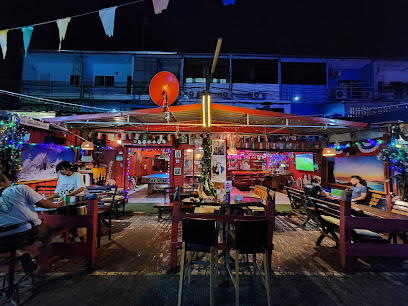
Reggae Home & Bar
Discover the lively spirit of Chiang Rai at Reggae Home & Bar, where music, drinks, and good vibes create an unforgettable nightlife experience.

Le Petit Cafe & Wine Club
Discover the cozy ambiance of Le Petit Cafe & Wine Club in Chiang Rai, where fine wines and delectable bites await every visitor.
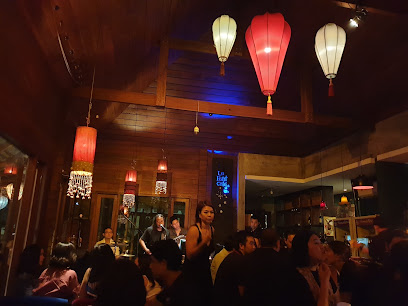
Peace house bar
Experience the lively ambiance and live music at Peace House Bar in Chiang Rai, a must-visit destination for tourists seeking fun and relaxation.

Hangover corner aka Steve’s Bar
Discover Hangover Corner in Chiang Rai - a cozy bar where locals and travelers unite for drinks, laughter, and unforgettable experiences.

Vinyl & Wine
Discover the perfect blend of music and fine wine at Vinyl & Wine, a unique bar experience in the heart of Chiang Rai.

RAD BAR
Experience the vibrant nightlife of Rad Bar in Chiang Rai, where great drinks and an electric atmosphere await you.

Lao Khan (Tiger Vibe) Wine Bar & Eatery
Experience the vibrant ambiance and exquisite flavors at Lao Khan (Tiger Vibe) Wine Bar & Eatery in Chiang Rai, a perfect spot for wine lovers and foodies alike.
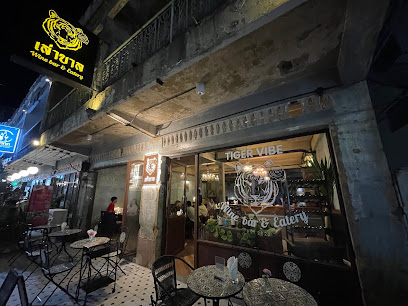
Poc Bar
Discover the vibrant nightlife at Poc Bar in Chiang Rai, offering a unique blend of local brews and creative cocktails in a stylish setting.
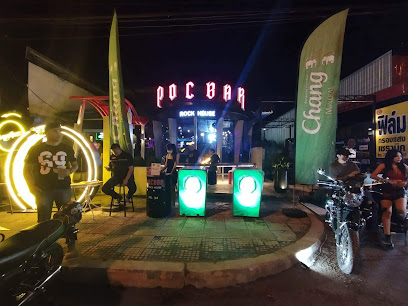
Rosebar
Experience the vibrant nightlife of Chiang Rai at Rosebar, where great drinks and a lively atmosphere await every visitor.

Mon Bar
Experience the vibrant nightlife of Chiang Rai at Mon Bar, where locals and tourists unite for unforgettable evenings filled with great drinks and lively atmosphere.

The MOON Chiangrai
Discover the lively atmosphere and local charm at The MOON Chiangrai, a must-visit bar for tourists seeking an authentic night out.

Cafe Alberto
Experience the vibrant nightlife of Chiang Rai at Cafe Alberto, where local flavors meet a lively atmosphere in a perfect bar setting.

Local Phrases
-
- Helloสวัสดี
[sawasdee] - Goodbyeลาก่อน
[la kon] - Yesใช่
[chai] - Noไม่
[mai] - Please/You're welcomeโปรด/ยินดี
[bproht/yindee] - Thank youขอบคุณ
[khob khun] - Excuse me/Sorryขอโทษ
[khaw toht] - How are you?สบายดีไหม
[sabai dee mai] - Fine. And you?สบายดีค่ะ คุณล่ะ
[sabai dee ka kun la] - Do you speak English?คุณพูดภาษาอังกฤษได้ไหม
[kun poot pah saa angkrit dai mai] - I don't understandฉันไม่เข้าใจ
[chan mai kao jai]
- Helloสวัสดี
-
- I'd like to see the menu, pleaseฉันอยากดูเมนู ขอบคุณ
[chan yahk doo menu khob khun] - I don't eat meatฉันไม่กินเนื้อ
[chan mai gin neuua] - Cheers!ชนเกราะ!
[chon grao] - I would like to pay, pleaseฉันอยากจ่ายเงิน ขอบคุณ
[chan yahk jai ngern khob khun]
- I'd like to see the menu, pleaseฉันอยากดูเมนู ขอบคุณ
-
- Help!ช่วยด้วย!
[chuay duay] - Go away!ไปที่อื่น!
[pai tee eun] - Call the Police!โทรตำรวจ!
[tor tamruat] - Call a doctor!โทรหมอ!
[tor mor] - I'm lostฉันหลงทาง
[chan long tang] - I'm illฉันไม่สบาย
[chan mai sabai]
- Help!ช่วยด้วย!
-
- I'd like to buy...ฉันอยากซื้อ...
[chan yahk seuu] - I'm just lookingฉันแค่ดู
[chan kae doo] - How much is it?ราคาเท่าไหร่
[ra kha thao rai] - That's too expensiveแพงเกินไป
[paeng gein pai] - Can you lower the price?ลดราคาได้ไหม
[lot ra kha dai mai]
- I'd like to buy...ฉันอยากซื้อ...
-
- What time is it?ตอนนี้กี่โมง
[dton nee kee mong] - It's one o'clockตอนนี้หนึ่งโมง
[dton nee neung mong] - Half past (10)ทุกครึ่ง
[took kreung] - Morningเช้า
[chao] - Afternoonบ่าย
[bai] - Eveningเย็น
[yen] - Yesterdayเมื่อวาน
[meua wan] - Todayวันนี้
[wan nee] - Tomorrowพรุ่งนี้
[proong nee] - 1หนึ่ง
[neung] - 2สอง
[song] - 3สาม
[sam] - 4สี่
[see] - 5ห้า
[ha] - 6หก
[hok] - 7เจ็ด
[jet] - 8แปด
[paet] - 9เก้า
[gao] - 10สิบ
[sip]
- What time is it?ตอนนี้กี่โมง
-
- Where's a/the...?...อยู่ที่ไหน
[yoo tee nai] - What's the address?ที่อยู่คืออะไร
[tee yoo keu arai] - Can you show me (on the map)?คุณแสดงให้ฉันดูหน่อยได้ไหม
[kun sa daeng hai chan doo noi dai mai] - When's the next (bus)?รถเมล์ต่อไปเวลาเท่าไหร่
[roh mel tor pai welaa thao rai] - A ticket (to ....)บัตรโดยสารไป...
[bpra dtoi saan pai]
- Where's a/the...?...อยู่ที่ไหน
History of Chiang Rai
-
Chiang Rai was founded in 1262 by King Mengrai, the ruler of the Lanna Kingdom. The city served as the capital of Mengrai's expanding kingdom and was strategically positioned along trade routes connecting the region to other parts of Southeast Asia.
-
Chiang Rai played a crucial role in the Lanna Kingdom, which flourished from the 13th to the 18th centuries. The kingdom was known for its unique culture, art, and architecture, much of which was influenced by neighboring Burma and the Khmer Empire. Temples such as Wat Phra Kaew and Wat Rong Khun are testaments to this rich cultural heritage.
-
In the late 16th century, Chiang Rai and the Lanna Kingdom came under Burmese control. This occupation lasted for nearly 200 years, during which the region experienced significant cultural and economic changes. The Burmese influence can still be seen in some of the city's older temples and architectural styles.
-
In the late 18th century, King Taksin of Siam (modern-day Thailand) successfully drove the Burmese out of Lanna. Chiang Rai was officially incorporated into the Kingdom of Siam in 1786. This marked a new era of stability and development for the city as it became more integrated into the broader Thai culture and economy.
-
In the late 19th and early 20th centuries, Chiang Rai found itself at the crossroads of European colonial ambitions in Southeast Asia. The region became part of the 'Golden Triangle,' a notorious area where Thailand, Laos, and Myanmar meet, known for opium production and trade. This period brought increased attention and development to the area, albeit often for nefarious purposes.
-
In recent decades, Chiang Rai has experienced significant modernization and development, attracting tourists with its unique blend of history, culture, and natural beauty. Efforts have been made to preserve and revive Lanna culture, seen in the restoration of historical sites and the promotion of traditional arts and crafts. Attractions such as the White Temple (Wat Rong Khun) and the Blue Temple (Wat Rong Suea Ten) highlight the city's ongoing cultural renaissance.
Chiang Rai Essentials
-
Chiang Rai is located in northern Thailand and is accessible by various modes of transport. The nearest airport is Mae Fah Luang-Chiang Rai International Airport, which is about 10 km from the city center. Direct flights are available from Bangkok and other major cities. Alternatively, you can take a bus from Bangkok, Chiang Mai, or other nearby cities. The bus journey from Bangkok takes around 11-13 hours, while from Chiang Mai, it takes about 3-4 hours. Train services are also available from Bangkok to Chiang Mai, from where you can take a bus or taxi to Chiang Rai.
-
In Chiang Rai, local transportation options include tuk-tuks, songthaews (shared taxis), and motorbike taxis. Tuk-tuks are a convenient way to travel short distances within the city. Songthaews operate on set routes and are a cost-effective option for getting around. For more flexibility, you can rent a motorbike or a bicycle. Car rentals are also available for those who prefer to explore the region at their own pace. Be cautious and ensure you have the proper driving license if you choose to rent a vehicle.
-
The official currency in Thailand is the Thai Baht (THB). Credit and debit cards are widely accepted in hotels, restaurants, and larger shops. However, cash is preferred in smaller establishments and local markets. ATMs are readily available throughout Chiang Rai, and most allow withdrawals using international cards. It's advisable to carry some cash for small purchases and tips. Currency exchange services are available at the airport, banks, and exchange booths in the city.
-
Chiang Rai is generally a safe destination for tourists. However, it is always recommended to take standard precautions. Avoid unlit and isolated areas at night and keep an eye on your belongings in crowded places like markets and bus stations. Petty theft, such as pickpocketing, can occur, especially in tourist-heavy areas. There are no specific high-crime areas targeting tourists, but it's always best to stay vigilant and aware of your surroundings.
-
In case of emergency, the emergency phone number in Thailand is 191 for police assistance and 1669 for medical emergencies. Mae Fah Luang-Chiang Rai Hospital is the main hospital in the city and provides comprehensive medical services. Pharmacies are also widely available for minor health issues. It is highly recommended to have travel insurance that covers medical emergencies and accidents. Keep a list of emergency contacts, including your country's embassy or consulate, in case you need assistance.
-
Fashion: Do dress modestly, especially when visiting temples and religious sites. Avoid wearing revealing clothing. Religion: Do show respect in places of worship. Remove your shoes before entering and avoid pointing your feet at religious statues or images. Public Transport: Do be polite and offer your seat to elderly passengers. Avoid loud conversations and keep your belongings close. Greetings: Do greet people with a 'wai' (a slight bow with hands pressed together). Avoid touching people's heads as it is considered disrespectful. Eating & Drinking: Do try local dishes and street food. It's polite to finish your plate, but don't be offended if locals share food from your plate, as it's a sign of friendship.
-
To experience Chiang Rai like a local, visit the night bazaar where you can enjoy local food, crafts, and cultural performances. Take a stroll or bike ride along the Kok River for scenic views. Engage with locals, as they are often friendly and willing to share insights about their culture and history. Don't miss visiting the White Temple (Wat Rong Khun) and the Blue Temple (Wat Rong Suea Ten), which are iconic landmarks. For a unique experience, explore the nearby hill tribe villages to learn about their traditions and way of life.
Trending Landmark in Chiang Rai
-
Wat Rong Khun - White Temple
-
Rong Suea Ten Temple
-
Wat Huay Pla Kang: Goddess of Mercy Chiang Rai
-
Chiang Rai Night Bazaar
-
Singha Park Chiang Rai
-
Baan Dam Museum
-
Chiang Rai Clock Tower
-
Wat Phra Kaew Chiang Rai
-
Walking Street Chiang Rai
-
Mae Fah Luang - Chiang Rai International Airport (CEI)
-
King Mangrai Monument
-
Wat Phra Sing
-
Chiang Rai City Pillar Shrine (San Lak Mueang)
-
Chiang Rai River Beach
-
Khun Korn Forest Park Waterfall
Nearby Cities to Chiang Rai
-
Things To Do in Chiang Mai
-
Things To Do in Pai
-
Things To Do in Nan
-
Things To Do in Muang Sing
-
Things To Do in Luang Prabang
-
Things To Do in Mae Hong Son
-
Things To Do in Vang Vieng
-
Things To Do in Inle Lake
-
Things To Do in Sukhothai
-
Things To Do in Loei
-
Things To Do in Kalaw
-
Things To Do in Phonsavan
-
Things To Do in Vientiane
-
Things To Do in Xieng Khouang
-
Things To Do in Naypyidaw













